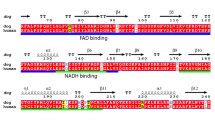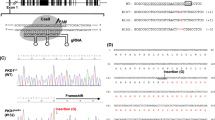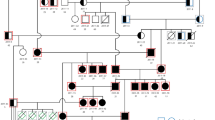Abstract
CONGENITAL porphyria in animals was first described by Fourie and Rimington1, who found the condition in cattle in South Africa. The most striking features of the disease are the colour of the bones due to the deposition of uroporphyrin and other pigments, and the excretion of considerable amounts of porphyrin in urine and faeces. The finding of such pigmented bones in cattle and swine in slaughterhouses has been reported from time to time (for review see ref. 2), but so far as we are aware no living domestic animals other than South African cattle have been available for study.
This is a preview of subscription content, access via your institution
Access options
Subscribe to this journal
Receive 51 print issues and online access
$199.00 per year
only $3.90 per issue
Buy this article
- Purchase on Springer Link
- Instant access to full article PDF
Prices may be subject to local taxes which are calculated during checkout
Similar content being viewed by others
References
Fourie and Rimington, NATURE, 140, 68 (1937).
Fourie, Onderstepoort J. Vet. Sci., 7, 535 (1936).
Fourie, Onderstepoort J. Vet. Sci., 13, 383 (1939).
Author information
Authors and Affiliations
Rights and permissions
About this article
Cite this article
CLARE, N., STEPHENS, E. Congenital Porphyria in Pigs. Nature 153, 252–253 (1944). https://doi.org/10.1038/153252b0
Issue Date:
DOI: https://doi.org/10.1038/153252b0
Comments
By submitting a comment you agree to abide by our Terms and Community Guidelines. If you find something abusive or that does not comply with our terms or guidelines please flag it as inappropriate.



